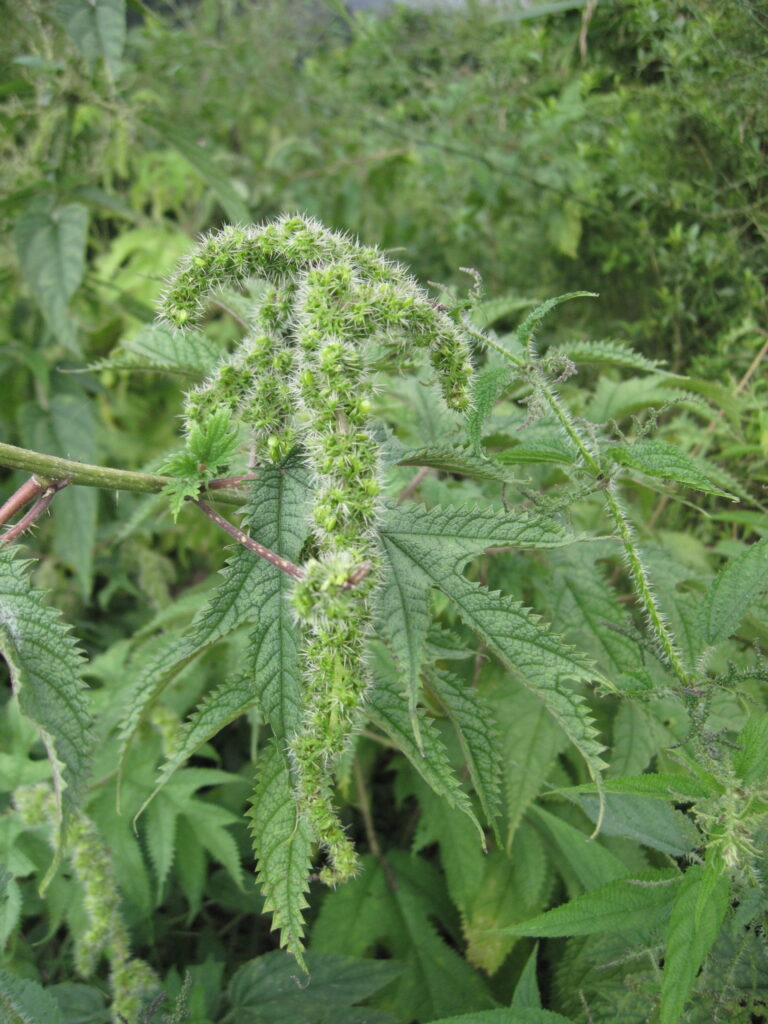This is a much despised plant in the hills of north India due to is very virulent stinging hairs. The plant grows to heights of 3 or 4 feet and is often used as fencing to keep out cattle. The popular hindi name Bichchhoo बिच्छू means scorpion. Indeed the itch produced by the plant, which in milder doses is that of many red ants, and with extensive contact can be like that of bees or scorpion stings, and may need anti-allergic medication. The itch is produced from the formic acid contained in the oil glands under the stinging hairs. Stipules are oblong-ovate, 1-3 cm long. Leaves are elliptic, ovate in outline, with base heart-shaped or flat, margin usually 3, 5, or 7-lobed or, rarely, regularly toothed or sometimes double-toothed at leaf base. Male inflorescences are cyme-like racemes or like panicles, 5-11 cm. Female ones are in distal axils of stem, 10-28 cm, 2.5-3 mm in diameter. There are a few subspecies with differing inflorescences and leaves.
However, the plant itself has medicinal value, and Nettle Tea has been used in Europe for many centuries. The leaves should not be touched with bare hands, but dried or boiled thoroughly in water , are used as diuretic, anti- rheumatic, anti-allergic and also for lactating mothers. The other parts of the plant are also useful for production of oils, biomass and fibre or paper.

Leave a Reply